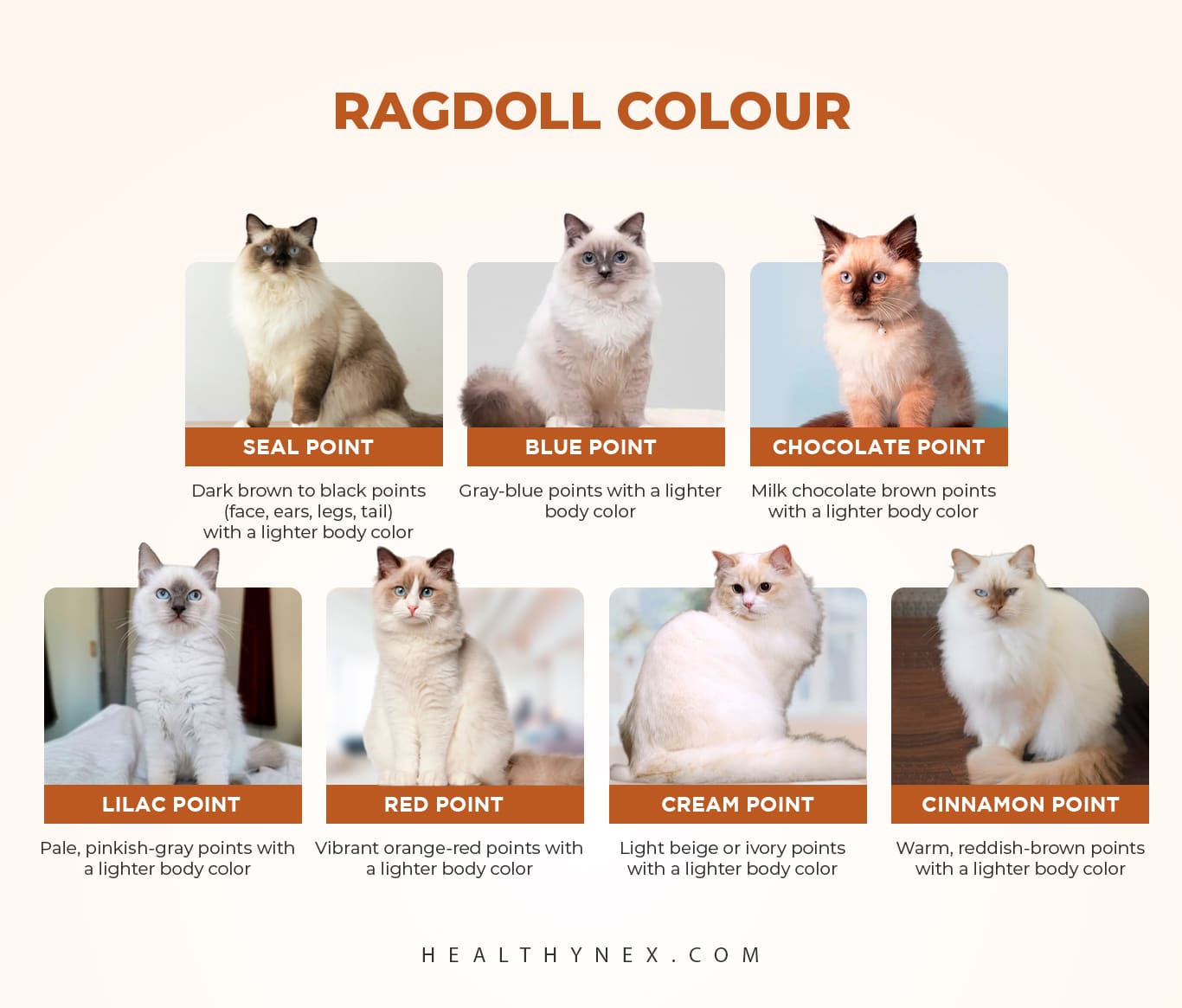If you have allergies but still want a cuddly cat, you might look at ragdoll cats. These beautiful cats are known for being calm and loving. People often ask if ragdolls are good for those with allergies. The answer is a bit complex. Ragdolls are not totally hypoallergenic because they produce Fel d 1 protein. This is what usually causes sneezing and itchy eyes in some people.
But, ragdolls don’t have an undercoat, which means they might shed less. This could help if you’re sensitive to cat dander. So, let’s dive into the truth about these cats and their allergy impact.
Key Takeaways
- Ragdoll cats are not completely hypoallergenic, as they produce the Fel d 1 protein.
- The absence of an undercoat in Ragdolls may lead to less shedding and reduced allergen dispersal.
- Choosing a female or a neutered male Ragdoll cat may potentially lower allergen exposure for mild allergy sufferers.
- Meticulous grooming and cleaning are vital for managing potential allergies related to Ragdoll cats.
- In some cases, allergy sufferers may need medical management, such as antihistamines or allergy shots, to live comfortably with a Ragdoll.
Understanding Allergies and Ragdoll Cats
Exploring ragdoll allergies reveals important facts. Many look for a hypoallergenic pet to avoid allergic reactions. Yet, this belief in hypoallergenic cats often leads to confusion and unexpected allergies. A specific protein causes most cat allergies.
The Composition and Effects of the Fel d 1 Protein
The protein cat allergen Fel d 1 is found in cat saliva, skin flakes, and urine. It’s known for causing allergic reactions. Because it’s tiny, it sticks to clothes and furniture, making it hard to avoid.
For those allergic to it, even low-shedding cats like Ragdolls can cause symptoms.
Assessing Allergy Risks with Ragdolls
Ragdolls have less dander but they’re not perfect for those with allergies. They still produce the allergenic protein Fel d 1. Good grooming and cleaning are vital to limit allergies. Their long fur can hold more allergens, so keeping your home clean is important.
The Myth of Hypoallergenic Cats: Unveiling Facts
There’s a myth that some cats, like Ragdolls, are hypoallergenic. However, no cat is completely free from allergens. For those with allergies, knowing this and managing it is crucial. This way, they can enjoy being with these loving pets.
The Truth Behind Ragdoll Cats’ Shedding and Dander
Considering a Ragdoll cat for your home? It’s important to know about ragdoll cat shedding and dander reduction. These cats have plush coats that lack an undercoat. This means they may shed less, which is good news for those worried about managing cat allergies.
Ragdoll cats have less fur shedding, but they still produce dander. Dander is skin flakes that can cause allergies. They also have the Fel d 1 protein, which is known for causing allergies in humans. So, completely avoiding allergen exposure from Ragdolls or any cat isn’t possible.
- Regular grooming can help keep allergens at bay by removing loose fur and reducing dander.
- Invest in a HEPA air purifier to capture airborne allergens including pet dander.
- Create an “allergy-free” zone in your home, particularly the bedroom, to limit allergen exposure while you sleep.
If you have allergies, think carefully before getting a Ragdoll cat. They may shed less fur, but allergens will still be in your home. To live happily with a Ragdoll, managing your expectations and keeping up with hygiene practices is key.

Ragdoll cats shed less than many breeds, which might help with allergies a bit. But, people with allergies need to be careful. Clean your home regularly and follow steps to reduce dander. With the right strategies and maybe medical help, you can enjoy life with these lovely cats.
Are ragdoll cats hypoallergenic
Cat lovers often believe ragdolls are hypoallergenic. It’s crucial to explore how comparing cat breeds for allergen levels helps in choosing a pet. Let’s examine Ragdolls’ standing among those cautious of allergies.
Comparing Ragdoll Cats to Other Breeds
Ragdolls are known for their unique coats that don’t have a dense undercoat like other cats. This means they shed less. This trait makes people curious when they compare cat breeds for allergy potential. Let’s see how Ragdolls stack up.
| Breed | Shedding | Fel d 1 Production |
|---|---|---|
| Ragdoll | Low | Moderate |
| Other Long-haired Breeds | High | Varies |
| Short-haired Breeds | Varies | Varies |
| Sphinx | None (Hairless) | Moderate |
Ragdolls may shed less, but it’s the Fel d 1 protein levels that really matter to people with allergies.
Ragdoll Cats and Allergenic Protein Production
Even though hypoallergenic ragdolls sound appealing, no cat is truly allergen-free. Every cat, including Ragdolls, produces the Fel d 1 protein. The amount of this protein varies. Some people might react less to Ragdolls, but for others, the difference may not be noticeable.
“While Ragdoll cats are loved for being calm and stunning, understanding their allergen production is vital for people looking for allergy-friendly cats.”
The truth about Ragdolls and allergies lies in science and personal experiences. Cat lovers with allergies need to make choices based on real information and their own reactions.
Responsible Pet Parenting: Tips for Managing Cat Allergies
Love cats but have allergies? You’re not alone. Being a responsible pet parent means finding ways to reduce allergens. This includes creating a home where you and your cat can both be comfy. It’s about building a living space that benefits everyone.
Cleaning Strategies to Reduce Allergens at Home
Using HEPA filters when vacuuming is key. They catch tiny dander particles. Clean regularly, focusing on surfaces and areas where pet hair gathers. Also, air purifiers can help by trapping allergens floating around your house. This makes living with your cat easier.
Personal Hygiene Practices to Minimize Allergy Symptoms
Personal grooming is also crucial in managing cat allergies. Wash your hands with soap after touching your cat. Also, changing clothes after long cuddle sessions helps. Keep your sleeping area cat-free and use hypoallergenic bedding. These habits can make your home more comfortable for both you and your cat.
FAQ
What makes a cat breed hypoallergenic?
Are Ragdoll cats less prone to cause allergies than other breeds?
Can grooming and cleanliness affect allergen levels from Ragdoll cats?
How does the Fel d 1 protein affect allergy sufferers?
What can allergy-prone cat owners do to manage symptoms while owning a Ragdoll?
Is it true that Ragdoll kittens produce less allergens?
Can creating cat-free zones in the home help with allergies?
Are there any specific cleaning strategies that help reduce Ragdoll cat allergens?
What personal hygiene practices are recommended for minimizing cat allergy symptoms?
Can allergy medication or shots be helpful for people living with Ragdolls?
Source Links
- https://untamed.com/blogs/cat-breeds/are-ragdoll-cats-hypoallergenic
- https://www.petssatisfaction.com/blogs/ragdoll-cat-breed-guide/are-ragdoll-cats-hypoallergenic
- https://www.yahoo.com/lifestyle/ragdoll-cats-hypoallergenic-084252317.html



